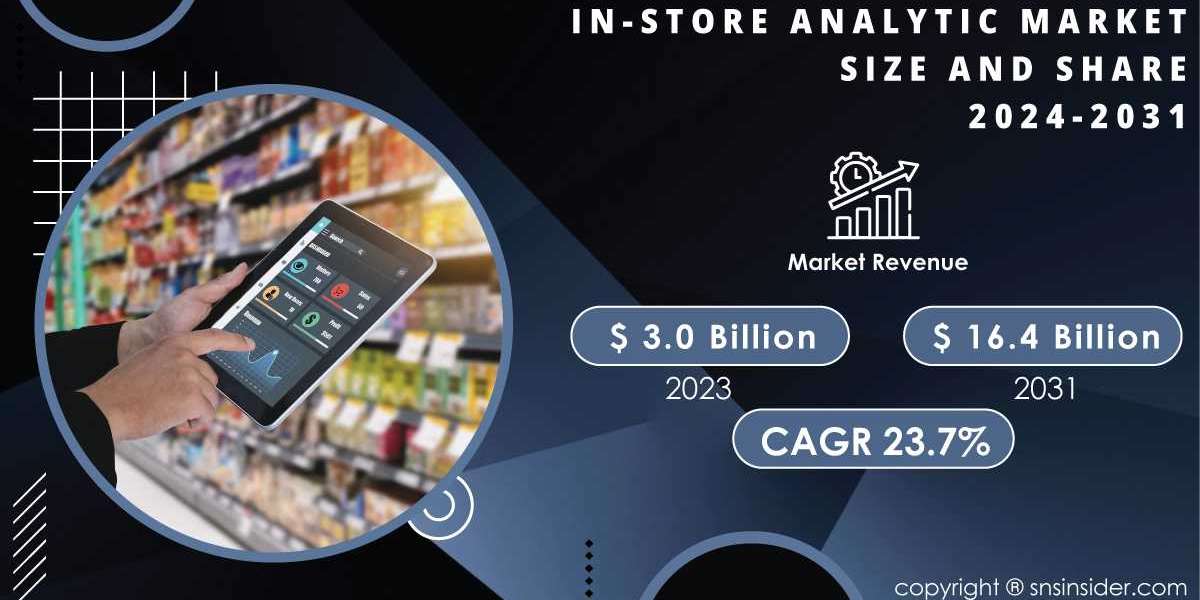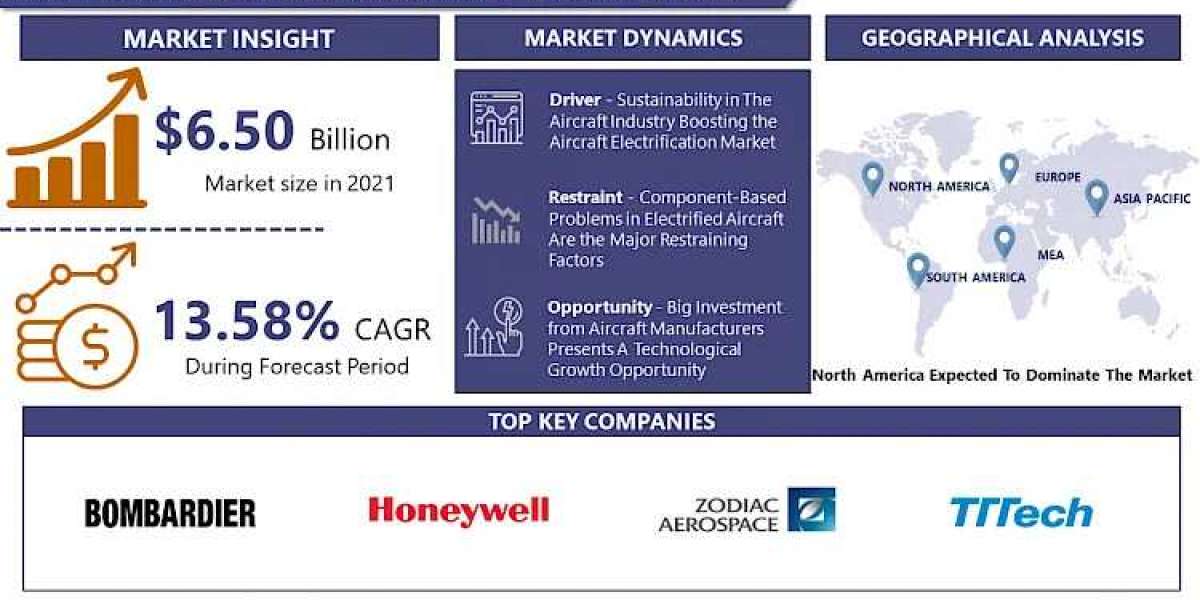In-Store Analytics 2024
In today’s competitive retail landscape, understanding consumer behavior and optimizing the shopping experience have become paramount for success. In-Store Analytics has emerged as a powerful tool that enables retailers to gather valuable insights about customer interactions, preferences, and behaviors within physical store environments. By harnessing advanced technologies and data analytics, retailers can enhance their operational efficiency, improve marketing strategies, and ultimately drive sales. The significance of this market is underscored by the In-Store Analytics Market Share, which was valued at USD 3.0 billion in 2023 and is projected to reach USD 16.4 billion by 2031, growing at an impressive compound annual growth rate (CAGR) of 23.7% over the forecast period from 2024 to 2031. This growth reflects the increasing adoption of data-driven strategies in the retail sector, highlighting the critical role of in-store analytics in shaping the future of retail.
At its core, in-store analytics involves collecting and analyzing data generated by customers as they navigate through a store. This data can be derived from various sources, including point-of-sale systems, customer foot traffic monitoring, and even advanced technologies such as Internet of Things (IoT) devices and artificial intelligence (AI). By leveraging these data points, retailers can gain a deeper understanding of customer preferences, product performance, and overall store dynamics.
Understanding In-Store Analytics
In-Store Analytics encompasses a range of methodologies and technologies that aim to monitor and analyze customer behavior within retail environments. This process begins with data collection, which can involve various tools and technologies, including cameras, sensors, beacons, and mobile applications. For instance, cameras placed throughout a store can track customer movements, allowing retailers to analyze foot traffic patterns and identify high-traffic areas.
One of the key aspects of in-store analytics is the use of heat maps. These visual representations highlight areas of high and low activity within a store, helping retailers understand which products attract the most attention and which sections may require optimization. By identifying these patterns, retailers can make informed decisions regarding product placement, store layout, and promotional strategies.
Moreover, in-store analytics can provide insights into customer demographics, such as age, gender, and shopping behavior. This information allows retailers to tailor their marketing efforts and create personalized shopping experiences that resonate with specific customer segments. For example, a retailer might use in-store analytics to identify that a particular demographic is more likely to purchase a specific product during certain times of the day. This insight can inform targeted promotions or merchandising strategies.
Benefits of In-Store Analytics
The adoption of in-store analytics offers a multitude of benefits for retailers. First and foremost, it enhances the overall shopping experience for customers. By analyzing customer behavior, retailers can optimize store layouts and product placements, ensuring that customers can easily find what they need. This increased convenience can lead to higher customer satisfaction and, ultimately, increased sales.
In-store analytics also enables retailers to make data-driven decisions. Rather than relying on gut feelings or assumptions, retailers can access real-time data to inform their strategies. For instance, if data indicates that a particular product is consistently underperforming in terms of sales, a retailer can reassess its placement, marketing efforts, or even pricing strategy. This ability to pivot based on real-time insights can significantly impact a retailer’s bottom line.
Additionally, in-store analytics can improve inventory management. By understanding which products are popular and which are not, retailers can make more accurate predictions about stock levels and restocking schedules. This helps prevent overstock situations and reduces the likelihood of stockouts, ensuring that customers find the products they want when they visit the store.
Moreover, the integration of in-store analytics with online data can provide a holistic view of customer behavior across channels. As omnichannel retail becomes increasingly important, understanding how customers engage with a brand both online and offline can help retailers create cohesive experiences. For instance, a customer who researches products online may visit a physical store to make a purchase. In-store analytics can track this behavior, allowing retailers to tailor marketing efforts based on the customer’s journey.
Technologies Driving In-Store Analytics
The growth of in-store analytics has been fueled by advancements in technology. One of the most significant developments has been the rise of IoT devices. These interconnected devices can gather data from various sources, providing real-time insights into customer behavior and store performance. Sensors can monitor foot traffic, while beacons can send targeted promotions to customers’ smartphones as they enter specific areas of a store.
Artificial intelligence and machine learning are also playing a crucial role in the evolution of in-store analytics. These technologies can process vast amounts of data, identifying patterns and trends that may not be immediately apparent to human analysts. By leveraging AI algorithms, retailers can gain deeper insights into customer behavior and preferences, allowing for more effective decision-making.
Another important technology is video analytics. By analyzing footage from security cameras, retailers can gather valuable information about customer interactions, product engagement, and even checkout patterns. Video analytics can reveal how long customers spend in certain areas, helping retailers identify opportunities for improvement in product placement and store layout.
Furthermore, mobile applications are increasingly being used to enhance in-store analytics. Retailers can encourage customers to download apps that track their shopping habits and provide personalized recommendations. This data not only benefits the customer but also provides retailers with valuable insights into preferences and behaviors.
Challenges and Considerations
While the benefits of in-store analytics are significant, there are also challenges that retailers must navigate. One of the primary concerns is privacy. With increased data collection comes heightened scrutiny regarding how that data is used and protected. Retailers must ensure compliance with data protection regulations and be transparent with customers about their data practices.
Another challenge is the integration of in-store analytics with existing systems. Many retailers may have legacy systems in place that are not equipped to handle the complexities of modern data analytics. Ensuring that all systems work together seamlessly can require significant investment and technical expertise.
Moreover, the successful implementation of in-store analytics relies on a cultural shift within organizations. Retailers must foster a data-driven mindset across all levels of the organization, encouraging teams to embrace insights and adapt strategies accordingly. This cultural change may take time, but it is essential for maximizing the benefits of in-store analytics.
Future Trends in In-Store Analytics
As the retail landscape continues to evolve, the future of in-store analytics looks promising. One key trend is the increasing use of augmented reality (AR) and virtual reality (VR) technologies. These immersive experiences can enhance the shopping journey, providing customers with interactive product demonstrations and personalized recommendations based on their preferences.
Another trend is the integration of in-store analytics with e-commerce platforms. As retailers strive for seamless omnichannel experiences, combining online and offline data will become increasingly important. This integration will allow retailers to create cohesive marketing strategies and better understand customer journeys across multiple touchpoints.
Moreover, the emphasis on sustainability is likely to influence in-store analytics. Retailers are increasingly focused on reducing their environmental impact, and analytics can help identify areas for improvement. For example, data may reveal which products have the lowest sales in certain regions, allowing retailers to optimize inventory and reduce waste.
Conclusion
In-store analytics is revolutionizing the retail industry by providing valuable insights into customer behavior and store performance. As retailers seek to optimize their operations and enhance the shopping experience, the importance of data-driven strategies cannot be overstated. The growth of the In-Store Analytics Market underscores the increasing recognition of its potential to transform retail practices. By leveraging advanced technologies and analytics, retailers can make informed decisions, improve customer satisfaction, and drive sales growth. As the industry continues to evolve, those who embrace in-store analytics will be well-positioned to thrive in an increasingly competitive landscape.
Contact Us:
Akash Anand – Head of Business Development Strategy
info@snsinsider.com
Phone: +1-415-230-0044 (US) | +91-7798602273 (IND)
About Us
SNS Insider is one of the leading market research and consulting agencies that dominates the market research industry globally. Our company's aim is to give clients the knowledge they require in order to function in changing circumstances. In order to give you current, accurate market data, consumer insights, and opinions so that you can make decisions with confidence, we employ a variety of techniques, including surveys, video talks, and focus groups around the world.
Read Our Other Reports:













